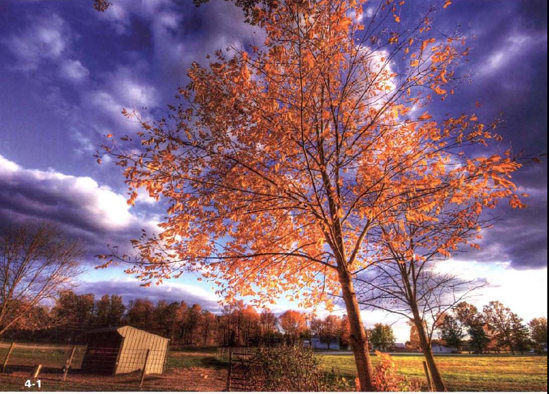Chapter 4. LANDSCAPES
EVALUATING LANDSCAPES
LIGHT
CAPTURING GREAT SKIES
CREATING PANORAMAS
This chapter begins the rest of the book. Chapters 1 through 3 covered the theory behind HDR, the gear required to shoot it, and general HDR processing techniques. From here on out you learn how to apply the general principles of HDR in specific situations. It's going to be fun and exciting.
First up — landscapes. Landscape photography, within the realm of HDR, is the study of light and an attempt to bring detail out of high-contrast scenes. Landscapes, by their very nature, are wide open and expansive. They lend themselves well to wide and ultra wide-angle lenses and panoramas.
Don't worry so much about camera settings as you work your way through this chapter. There is a phrase that might help: "F8 and be there." Set your aperture to f/8 (see 4.1) so you have a large depth of field. Carry a tripod or watch that your shutter speed is fast enough to prevent camera shake. And... be there. Enjoy.

Figure 4.1. ABOUT THIS PHOTO: This fall farm landscape was shot near sunset. Light cascades off nearby trees and colors abound in this vibrant photo. HDR from four bracketed raw exposures at −2/0/+2/+4 EV. (ISO 100. f/8, 1/100 second, Sigma 10-20mm f/4-5.6at 10mm) © Robert Correll
EVALUATING LANDSCAPES
Anyone can go out and take thousands of uninteresting landscape photos. Many capture good photos. Only a few ...
Get HDR Photography Photo Workshop now with the O’Reilly learning platform.
O’Reilly members experience books, live events, courses curated by job role, and more from O’Reilly and nearly 200 top publishers.

